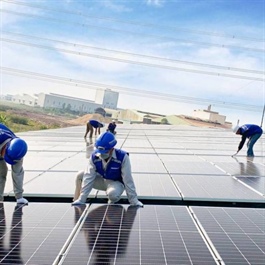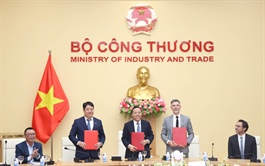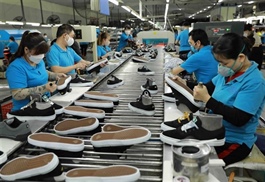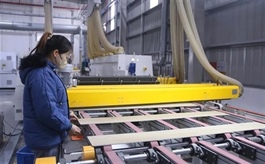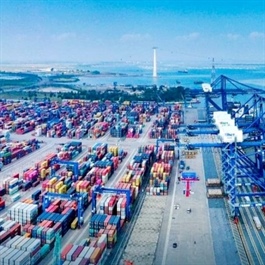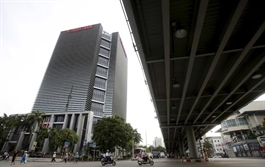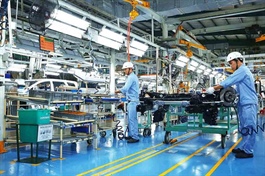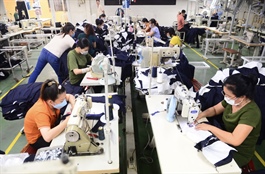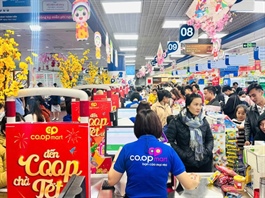Livestock sector promotes circularity
Livestock sector promotes circularity
Several livestock companies are making efforts to enhance their circular economy to boost the quality and value of products, amid a target of $1.5 billion in export turnover for the sector this year.
In the first month of the new year, local agricultural businesses and state management authorities are accelerating negotiations with global partners to unlock more export markets.
The Department of Livestock Production under the Ministry of Agriculture and Rural Development (MARD) is continuing negotiations to export livestock products to South Korea, China, Singapore, the EU, and the Middle East.
At the same time, processing enterprises are also working with partners to export to markets which are opened for livestock goods from Vietnam.
C.P. Vietnam is making efforts to negotiate with international partners, and simultaneously enhance the quality of livestock products to expand new export markets. In 2024, C.P. Vietnam Food Binh Phuoc exported about $200 million worth of chicken products to a number of countries such as Japan, China, Laos, and Cambodia.
“To export products, we have applied the circular economy model to business operations. Regarding plastics, especially the extended producer and exporter responsibility, the group has complied through declaration on the system, and participated in the Vietnam Packaging Recycling Alliance, contributing to the expansion of waste recycling in the most positive way,” said CEO Pawalit Ua Amornwanit.
The company has nearly 20 factories across the country with 30,000 employees. The company minimises waste in the production process and makes optimal use of resources, including using cattle manure, sewage sludge, eggshells, and compost for biogas to generate electricity.
“Thanks to circular green production, our livestock products meet the strict standards of importing countries,” Amornwanit added.
In another case, Greenfeed, a Vietnamese enterprise with 20 years of experience, has implemented a range of solutions, including rooftop solar energy systems, organic fertiliser production, wastewater treatment and reuse for crop irrigation, and biogas recovery for electricity generation, and more.
Sustainability director Pham Tuan Anh said, “Solid waste on Greenfeed’s farms will be composted and processed as organic fertiliser to provide abundant nutrients to plants and increase soil organic matter. With wastewater, this business will process and recover biogas to activate generators and produce electricity for the farm’s operating needs.”
Meanwhile, TH Group is implementing the circular economy during production, farming, and processing to enhance the quality and value of products.
A representative of TH Group said, “The circular economy presents an invaluable opportunity for us. Sustainability and environmental protection have been guiding principles in all the company’s activities since its founding, which we have implemented through concrete steps.”
TH Group has achieved milestones in clean energy, biodiversity, land management, and waste and wastewater treatment, in addition to reducing plastic waste. It has also invested in wastewater treatment systems using Dutch technology.
In 2023, TH Group’s farm system reduced emissions by an average of more than 20 per cent per unit of product through a range of solutions focusing on reducing greenhouse gas emissions, switching to green and renewable energy, and increasing carbon capture.
The group’s solar panel system at its farm and factory generates over seven million kWh annually, contributing to a reduction of 5,000 tonnes of CO2 per year.
Using the circular economy to enhance the export value of livestock is a part of the industry’s mid and long-term development strategies. The livestock development strategy for 2021–2030 targets an export value of livestock products of $1-1.5 billion in 2025 and $3-4 billion by 2030.
“The strategy has identified the potential of ecological regions for comprehensive and sustainable development along the value chain, ensuring food safety, environmental friendliness, adapting to climate change, and treating livestock humanely,” said Pham Kim Dang, deputy director of the Department of Livestock Production under the MARD, at a summary meeting in late 2024.
According to the MARD, in 2024, the country’s livestock export turnover hit more than $533 million, up 6.5 per cent on-year. Nearly $130 million came from milk and milk products, while $172.1 million was from meat, meat by-products, and offal.
Vietnam exported approximately 1,700 live pigs and 1,200 live cattle in 2024, in addition to $1.05 billion worth of animal feed and raw materials for livestock production.
The livestock sector aims for a 4-5 per cent production value increase in 2025 compared to 2024. The sector’s contribution to overall agricultural output is projected to reach 28-30 per cent.
“To realise the export target, there is a need to strengthen inspection and supervision efforts, reduce administrative procedures, and enhance forecasting and swift response to unexpected fluctuations to guide sector in maintaining growth,” said Deputy Minister of Agriculture and Rural Development Phung Duc Tien at a meeting of MARD leaders on January 2.
Tien requires the Department of Livestock Production, the Livestock Research Institute, and related entities to ensure that research projects are innovative, aligned with global trends, and focused on digital transformation.
“Aligning with the global trend towards safe and low-emission livestock production, the department should provide strategic advice on developing policies, while scaling up effective biosecure and circular farming models,” Tien said.
“It is also essential to encourage the development of value chains connecting businesses with other enterprises and farmers to ensure strict control over all stages of production,” he added.



